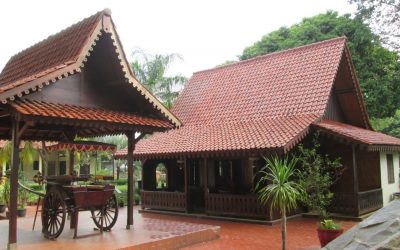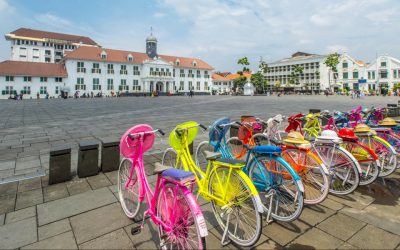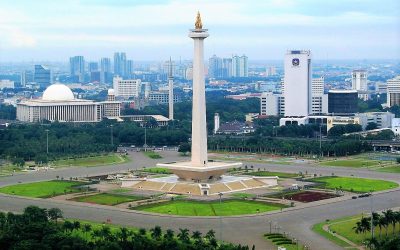Home / Batik Regions – Western Indonesia – Java Island – Jakarta / Indonesian Stamp Museum
Cultural Destination
Embrace the spirit of the place!
Indonesian Stamp Museum in Taman Mini Indonesia Indah
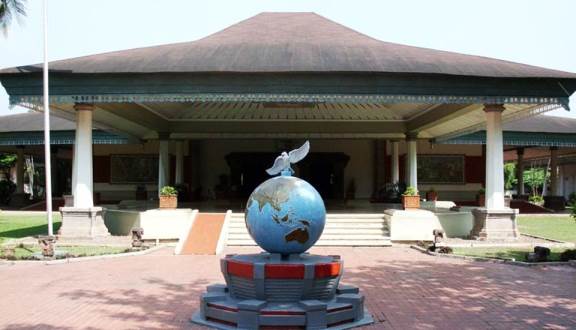
Indonesian Stamp Museum (photo: Jejak Piknik)
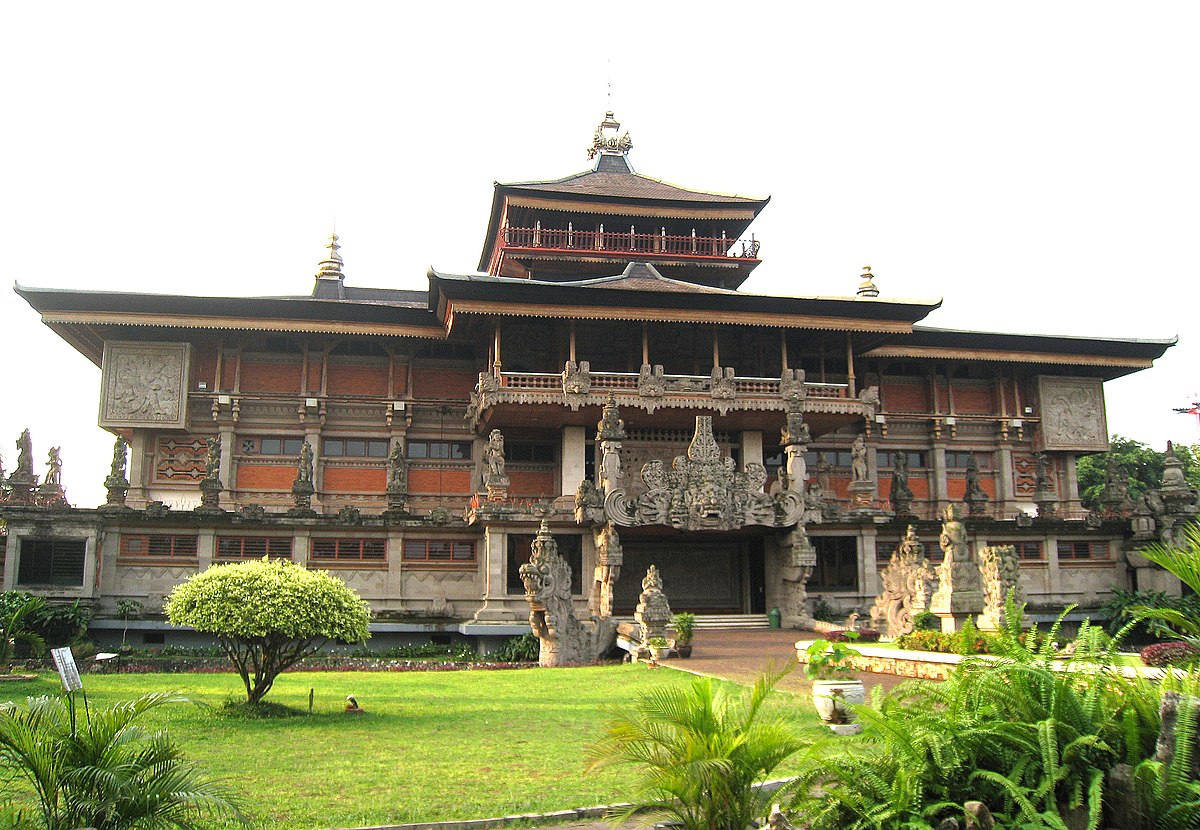
Museum of Indonesia, Taman Mini Indonesia Indah/Indonesian Cultural Park (photo: Gunawan Kartapranata)
Indonesian Stamp Museum
This quaint museum will bring you back to in time, to when smartphones and internet technology were not even dreamt of. It brings home the stark realization that getting connected with people from long distance was nearly impossible once upon a time. The museum exhibits all types of stamps from all over the world, as well as different gadgets and items relating to the business of getting letters delivered safely. The Stamp Museum is part of the Taman Mini Indonesia Indah, or the Beautiful Indonesian Cultural Park complex. The Park spans a total area of 100 hectares, and it contains a number of pavilions showcasing the collections of Indonesian vernacular architecture, traditional clothing, cultural objects, and dances as well as textile heritage of all 34 provinces. Are you ready to take a journey back in time?
Tourist Attractions in Jakarta
Setu Babakan – Betawi Cultural Village
This place will make you know and appreciate some cultural heritage of
Kota Tua – Jakarta Old Town
Jakarta is the capital of Indonesia. It has been the theater of lots of historical and cultural
National monument – The Monas
The monument was a “lighthouse project” designed to remind
Jakarta
Batik Motifs
Discover
Indonesian
Batik
Motifs
Lok Baintan Floating Market
As you can imagine, the most authentic thing is that you can buy things and even
Awan Berarak
Awan Berarak is a combination of Dayak motifs and Malay patterns. The word ‘Awan Berarak’ means the
La Galigo
La Galigo is a literary work of the Buginese Epic that has 300 thousand epic lines. It is considered even
Wirasat
Wirasat or divine inspiration is a gift from God. This inspiration is symbolized by
Gedhog Kembang Waluh
a combination of Javanese cultural motif of the Majapahit kingdom (XII-XIV century) with
Mahkota Siger
Siger is the crown of a noblewoman in ancient time. It is a symbol of femininity, strength, and
Cengkeh
The clove flower motif is the main commodity of the Tolitoli Regency. This motif represents
Ikan tambal
The word “Ikan” refers to fish. The philosophical meaning of Ikan Tambal means is
Ake Patra
Ake is related to the divinity and the composition of the universe. It is a symbol of
Rumah Mamuju
the Batik motif illustrates the house of Mamuju King with the stairs, located on the left of the wooden stage house
Bintik Tujuh
The Bintik Tujuh (Seven Dots) motif has 7 white spots and green color gradation as
Malinau Cultural Festival
You will witness a unique competition that might not be found other than in
Sandeq
Sandeq Boat is a symbol of the maritime importance of the West Sulawesi region. The greatness of
Dayak Kamang
Kamang motif is generally found in the Dayak tribe shield because it is believed to
Biji Kopi
The coffee seeds motif illustrates the pride of local coffee specialities in
Tengkawang Ampiek
With its many advantages, the Dayaks use this leaf in ritual ceremonies. This plant is a symbol of
Ukir Sentani
The Ukir motif is a batik motif that is inspired by various traditional Sentani wood carvings
Tenun Bima
The motifs are adopted from Bima woven textile. This pattern has received a great
Daun Lada Hitam
The black pepper motif represents the main commodity of Bangka Belitung
Kawung
The Kawung motif was created by Sultan Agung Hanyokrokusumo (1593 – 1645) as a symbolic gift for
Tubo Kelapa
Coconut tree is a symbol of a good character and strong mentality. It illustrates the more success a person, the more
Pati-Pati Pinehiku
It symbolizes the hierarchy in society and the social status of the Mekongga
Raja Ampat
Raja Ampat motif represents the marine life at Raja Ampat archipelago in
Sero Tangga
The Sero Tangga illustrates an endearing feeling and sacrifices of a person to fulfil
Angsa Duo
According to legend, the Angso duo batik motif is a pair of swans that are believed to have led Princess
Manguni Minahasa
Manguni is identified as the symbol of the Minahasa people. Manguni is known as a
Gentala Arasy
Built as high as 80 meters, the tower also highlights the historical side of
Kaganga Tanah Rejang
If Batik Besurek combines Arabic calligraphy motifs, then the Kaganga batik takes
Insang Ikan
Insang refers to the gills of the fish. This is a typical pattern of Malay ethnic who inhabits
Tanah Liek
The word “Tanah Liek” refers to clay in Minang language. It is also known as
Kaharingan
The Kaharingan or ‘tree of life’ based on the Dayak tribes’ belief system. This tree symbolizes
Buketan Bali
The Balinese bouquet (Buketan Bali) is a floral arrangement and the name is
Salakanagara
Salakanagara batik motif illustrates the first kingdom in the Betawi land
Enggang Dayak
Local people beliefs that hornbills are an incarnation of the Commander of the Birds. It has supernatural
Tabir Tanjung
Tanjung flower is a type of Cherry tree flower, which is commonly found in
Besurek Rembulan
This batik illustrates praise for God who created the wonderful universe
Kerawang Tegak Aceh
The Vertical Upright (Kerawang Tegak) Motif symbolizes a person who has a strong
Merak Ngeram
The hatching peacock motif has a very deep meaning which refers to the sacrifice and
Daun Sirih
This motif illustrates betel leaves that are used by Lombok communities as traditional
Lipaq Sabe
Lipaq Saqbe contains a simple geometric classical motif with various flower decorations. This textile is
Durian Pecah
Broken Durian motifs depict the foundation of faith. The second half signifies the mastery of
Tangerang Herang
Tangerang Herang motif is a symbol of Tangerang city. The Tangerang Herang batik motif consists of
Tifa Totobuang
The batik motifs illustrate Maluku’s traditional music instrument called
Hiu Taliyasan
Indonesia is also home to the world’s largest fish, the whale shark (Rhincodon typus). Hiu Taliyasan refers to
Leuit Sijimat
This motif reflects the daily activities of the Baduy tribe in Banten. The main ornaments of batik motif consist of:
Gonggong Beruntun
This motif illustrates that a person should maintain a positive attitude and
Honai
The Honai is inspired by the traditional house of the Papuan community living in
Gumin Tambun
Based on Hindu mythology, this motif symbolizes lucks, abundant wealth, and
Daun Simpor
This motif is inspired by the Simpor plant (Dillenia Suffruticosa) which is a typical
Tampuk Manggis Sasirangan
The motif illustrates the philosophy of the mangosteen fruit, which is
Gigi Haruan Lidi
The Gigi Haruan Lidi motif is taken from the name of the cork fish and is a symbol of
Pinawetengan
The Pinawetengan Batik pattern was taken from a prehistoric inscription in
Karawo Pinang
Pinang refers to the Palm areca tree. This motif is considered as the original
Parang Rusak
Another meaning behind this motif is an unconquerable spirit, symbolized by
Pattimura
Pattimura is the name of an Indonesian hero who fought against colonialism in
Gajah Way Kambas
The motif illustrates the Lampung’s natural reserve, the Way Kambas. it also symbolizes
Gorga Simeol-Meol
The Gorga Simeol-meol is a pattern of plant tendrils. it is regarded as a symbol of longevity and
Kain Cual
Cual textile tradition has existed since the 17th century. The word “Cual” refers to
Tongkonan
Toraja’s traditional house is called Tongkonan. Tongkonan is a place for
Desa Na Tolu
The Desa Na Tolu characteristic pattern symbolizes the Batak philosophy of existence and
Sekomandi
Its philosophical meaning is the eternal union which refers to a saying “until death do us part”
Teguh Bersatu
This batik motif shows the strength of the people of Kupang. It also represents a sense of
Rangkiang
The word “Rangkiang” refers to the rice granary in the Minangkabau language. It symbolizes
Prada Papua
The word “Prada” in the Javanese-Indonesian dialect means a batik textile that
Wakatobi
It symbolizes the coastal beauty of the Wakatobi island and the symbol of Patra symbolizes
Gamolan
This motif illustrates Gamolan, a bamboo musical instrument of Lampung that is
Besurek Rafflesia
The term “Basurek” refers to a textile that contains letters or inscriptions
Paqbarre Allo
The word “Barre” means round and “Allo” means the sunlight. This motif is interpreted as
Jumputan Bintang
The word Jumputan means the tie-dye technique, while the word “Bintang” refers to
Bekantan Pakis
This motif represents Pakis Haji (Polystichum setiferum), an endemic plant in
Karawo Mahkuta
Mahkuta refers to Gorontalo’s traditional crown. It represents noble characters of
Lontara
The Lontara script itself is a typical ancient script of Bugis and Makassar communities. History records that
Gonggong Siput
Gonggong (Strombus Turturella) is one type of sea snail found around
Bomba Mawar
This motif means sacred love for family, kingdom, and God; It also illustrates
Parang Seling
Parang Seling or “alternating daggers” is a royal batik motif. It is a feminine variant of

